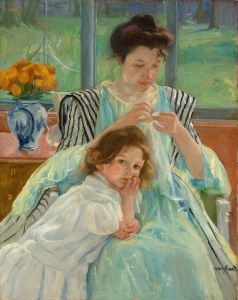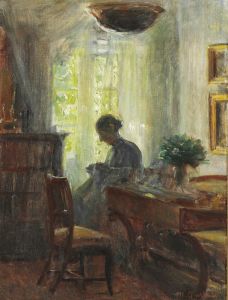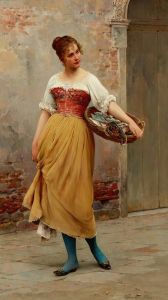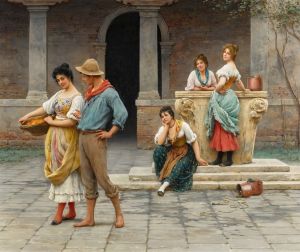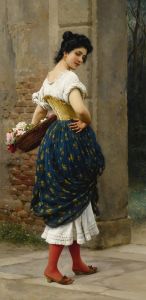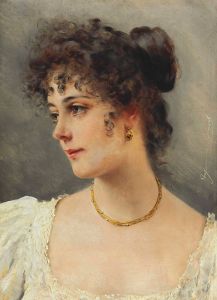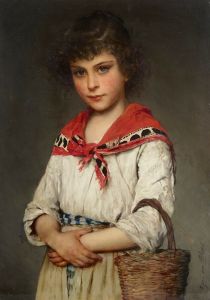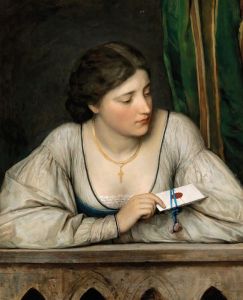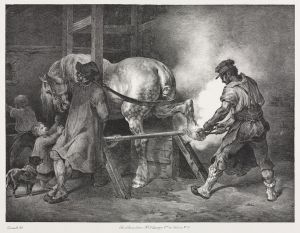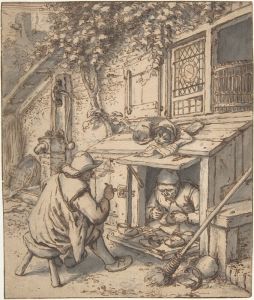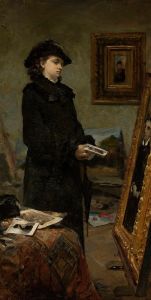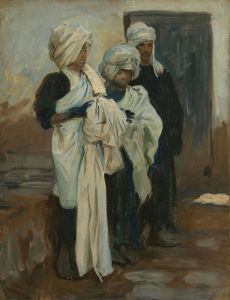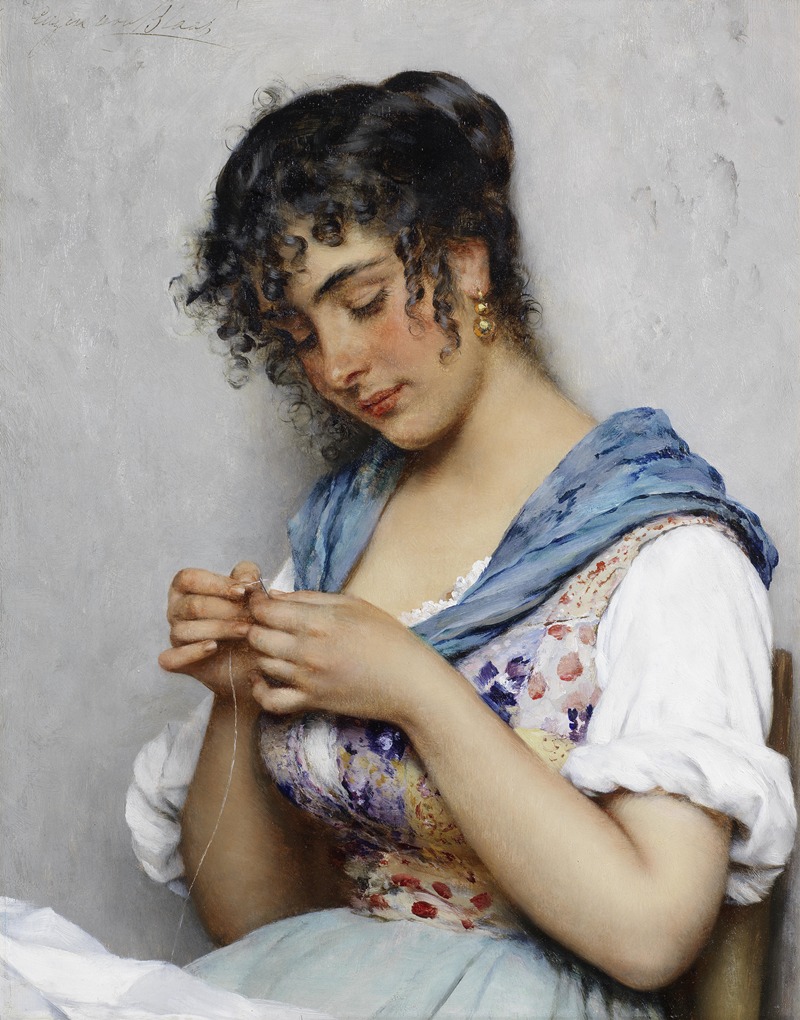
The Italian seamstress
A hand-painted replica of Eugen von Blaas’s masterpiece The Italian seamstress, meticulously crafted by professional artists to capture the true essence of the original. Each piece is created with museum-quality canvas and rare mineral pigments, carefully painted by experienced artists with delicate brushstrokes and rich, layered colors to perfectly recreate the texture of the original artwork. Unlike machine-printed reproductions, this hand-painted version brings the painting to life, infused with the artist’s emotions and skill in every stroke. Whether for personal collection or home decoration, it instantly elevates the artistic atmosphere of any space.
Eugen von Blaas, an Austrian painter known for his genre scenes, created "The Italian Seamstress" in the late 19th or early 20th century. Von Blaas was born in Albano Laziale, Italy, in 1843, and he developed a style that was characterized by its detailed realism and vibrant depiction of everyday life. His works often focused on the daily activities and social interactions of people, particularly in Venetian settings.
"The Italian Seamstress" exemplifies von Blaas's skill in capturing the nuances of human expression and the subtleties of light and texture. The painting portrays a young woman engaged in the act of sewing, a common and essential task in the domestic sphere during that period. The seamstress is depicted with a serene expression, absorbed in her work, which highlights von Blaas's ability to convey a sense of tranquility and focus.
Von Blaas's attention to detail is evident in the intricate rendering of the fabric and the play of light on the woman's clothing and surroundings. The painting reflects the artist's academic training and his commitment to realism, a style that was highly appreciated in the art world of his time. His works were often celebrated for their technical precision and their ability to capture the beauty of everyday moments.
The setting of "The Italian Seamstress" is typical of von Blaas's work, which frequently features interiors that are both intimate and richly detailed. The background elements, such as the furniture and decorative objects, are rendered with the same care as the central figure, creating a cohesive and immersive scene. This attention to the environment not only enhances the realism of the painting but also provides context for the viewer, offering insights into the lifestyle and culture of the period.
Eugen von Blaas was part of a family of artists; his father, Karl von Blaas, was also a noted painter. Eugen studied under his father and at the Academy of Fine Arts in Vienna, where he honed his skills and developed his distinctive style. Throughout his career, von Blaas exhibited widely, gaining recognition and acclaim for his genre paintings, which were popular among collectors and art enthusiasts.
"The Italian Seamstress" is representative of von Blaas's broader body of work, which often focused on themes of domesticity and the lives of women. His paintings provide a window into the social and cultural dynamics of his time, capturing the dignity and grace of his subjects with empathy and respect.
Today, Eugen von Blaas's paintings, including "The Italian Seamstress," are held in various private collections and museums, where they continue to be appreciated for their artistic merit and historical significance. His work remains a testament to the enduring appeal of genre painting and the artist's ability to find beauty in the everyday.





